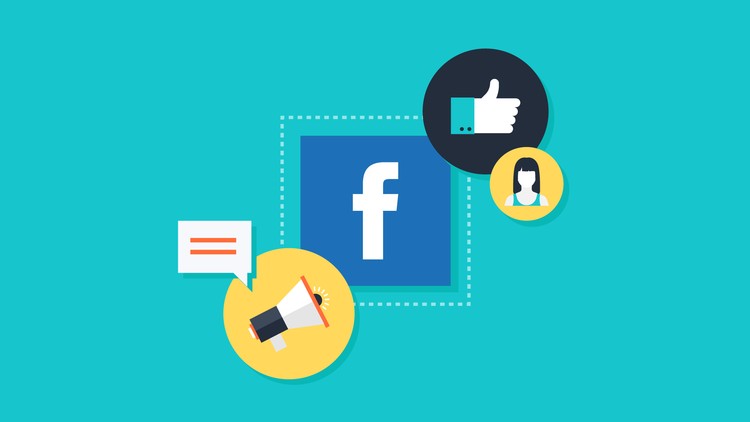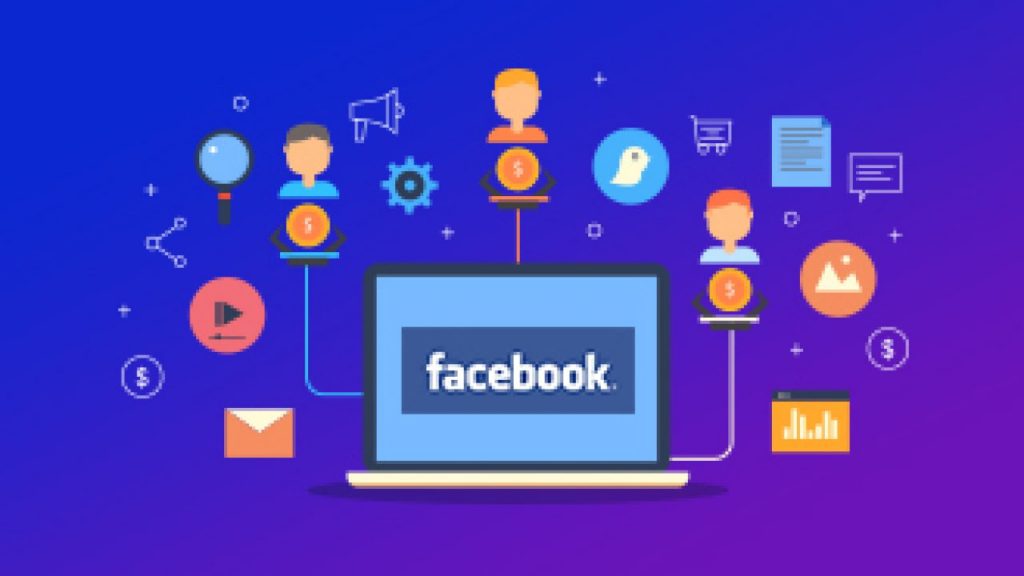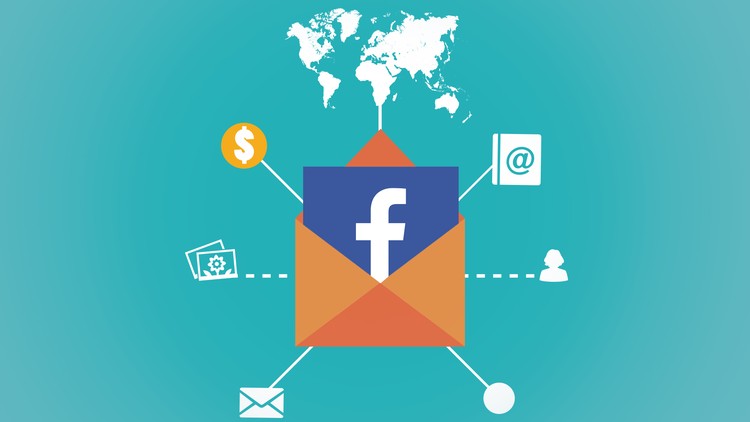3 Facebook Marketing Strategies to Up Your Income
Like many other social networks, Facebook is an effective tool in any marketer’s arsenal. But if you want to be successful with this tool, then you need to know how to use it.
Keep in mind that Facebook marketing is different from how the marketing on other social networking sites is done. This is because each tool has its specific purpose.

Just as you wouldn’t use a wrench to hammer in a nail, you need to be aware of how to use Facebook correctly so that you don’t waste your time or your money on marketing efforts that will ultimately end in a time and money failure.
Use Facebook to Drive Traffic to an Affiliate Promotion
There are three marketing strategies that you can use to make you more money on Facebook. The first method involves driving people to an affiliate promotion. If they click through your Facebook post or ad and make a purchase, then you’ll get a commission.
Many marketers offer a commission rate of 50%, but you should never choose a product based solely on the commission rate. If you promote crappy products, users will catch on and you’ll end up permanently damaging your brand for some quick cash.

That’s not what you want to do if you’re in the Internet marketing industry for the long haul. When it comes to promoting a product to make affiliate sales on Facebook, there are several things that you’ll want to consider.
The first is whether this product will help your audience. If it doesn’t meet a need or fulfill a want, then you might not find anyone who would want to buy it. And you could end up losing a lot of cash if you use boosted ads to promote the wrong product to the wrong audience.
Once you’ve established that a product really will help your followers, you need to evaluate the product yourself. As an affiliate, your name is on the line, too. If one of your followers buys this product and it doesn’t deliver the results that were promised, your reputation will be tarnished in their eyes.
One unhappy customer will always tell others.It’s far better to spend half an hour skimming the content of the product you plan to promote than it is to lose the trust and loyalty of your followers.
Now that you’ve confirmed that the quality of the product you’ll be promoting really will help your customers, you need to exam the creator’s sales page. There are some marketers who are so eager to launch their product, they don’t pay enough attention to their sales page.
As a result, they have a great product that nobody will buy because of a poor landing page.If a sales page isn’t going to convert readers into buyers, then there’s no reason to pay to promote it to your own fans.
The only exception to this rule is if you’ve built a loyal audience that trusts your word and is willing to buy a product that has a vague or poorly worded sales page. But be careful about promoting products with bad sales pages too often.
You might even be able to contact the seller and ask for something specific to be set up just for your readers. You might even create a page yourself if they don’t have the skills and ask them to use that for your orders only.
When it comes to Facebook posts, pictures are what capture your audience because we live in a more visual world than ever before. Yes, you need great sales text in your ad.
But if your picture doesn’t capture the attention of your fans, they won’t pause long enough to read your text. This is why picking an appropriate picture to include with your ad is so important.
Sometimes, you can use a photo directly from the sales page if it’s a high quality image. Other times, the product creator may have “swipe” files available with images that you can attach to your post.
But not every marketer is great with graphics. Maybe they were in a rush to launch and something went wrong with their graphics delivery – or maybe they didn’t take the time to hire someone who could create professional images.
When the images related to a product aren’t great, you still have two options. You can create your own images by using a website like PicMonkey.com or Canva.com. Both of these websites will allow you to create nice graphics, even if you have no prior experience.
If you don’t have the time or don’t want to create your own images, you can also purchase a photo. Stock sites like depositphotos.com have millions of images that you can buy and use in your advertisement.
The content portion of your ad is important as well. Don’t worry about the length of your content – here’s why. What you really want to do is give the reader a feeling that they’re reading a real review from a real person.
One way to do that is to personalize your review. For example, if you’re promoting a product that will help your audience lose weight without giving up donuts and other junk food, then you might start your review by mentioning the day you had a meltdown because you’d failed your diet again.
By starting a review with a personal story, you help your readers lower their guard and make them more likely to click through and buy the product that you’re referencing because they feel you can relate to them.
Keep in mind that a review that’s too glowing and over the top time after time may put readers on the defensive. This is why it can be helpful to list both the pros and the cons of the product.
For example, you may mention that the diet program is great at giving you practical tips that you can use right away, but that you wish the course had focused on what to do if you’re an emotional eater as well – or you wish it gave a set of recipes to incorporate into the plan.
Once you’ve finished up your review, you can create your Facebook post. But before you do, look at where you’ll be directing your audience to go once they click on your ad. Don’t direct them to a post on your blog where they canthen click through to the product.
This adds an extra step to the sales process and makes them more likely to abandon their purchase before they complete it. Instead, you should have the link for your advertisement direct to the sales page of the product.
This means you’ll have fewer buyers losing their way – and as a result, you should be earning plenty of affiliate commissions. Keep in mind that nobody on Facebook signs up to a page to be sold to 24/7.
Your affiliate posts and ads should be sprinkled in among many valuable posts that share free tips and insight with your Facebook fans. Whenever you share good products and posts with your audience, the chance of them sharing it with their followers increases.
One of the great things about affiliate income through Facebook is that you have the potential to promote both tangible and digital products. If you’re in the diet niche, for example, you can review both.
You might do a review of an info course from ClickBank one week – an ongoing review, or maybe even a challenge for your group. The next week, you might post a review of the new treadmill or barbells you just bought off Amazon.
Facebook is a great way to get going with your affiliate sales if you don’t yet have a website of your own. You attract some like-minded people to your page, pepper them with good advice, and periodically promote what you deem acceptable to your followers.
Build a List Through Facebook
Facebook posts aren’t just useful for earning affiliate commissions. They can also be used to grow your email list. As a marketer, one of the best things you can do is to focus on your subscriber volume.
These are people in your niche who are eager to hear from you and have given you permission to email them information.While growing your email list may not necessarily make you any money today, it can help you earn money later on.
This is because subscribers allow you to sell to them in the future many times over. So, while you may miss out on the opportunity for immediate cash, you can nurture a valuable relationship with subscribers and turn them into future buyers.

Before you purchase your Facebook advertisement or make an organic post, you should focus on creating a freebie. You want to offer your potential subscribers an opt in offer they can’t ignore.
In order to come up with this freebie, you’ll need to discover what buyers in your niche want most. You can start your research by looking at forums in your industry. For example, if you’re in the pain management industry, then look for chronic pain forums.
Then begin looking for similar threads made by the forum users. You’ll use these threads to note patterns and how users describe their aches and pains. This information will be helpful when you go to write your report.
From hundreds of forum threads, you might notice that the number one complaint on the forum is that back pain limits most users’ activities. You could take this information and create a freebie around this need.
Your freebie might be about how to live with back pain without letting it take over your life and robbing you of daily activities like walking and running.But you’ll still need to go beyond that.
You don’t want a report that sounds generic, like it could have been written by just anybody. You want the report to capture your voice and more importantly, your story. Many marketers are in their niches, not just because they heard they could make money in these niches, but because of a personal reason.
Maybe you don’t live with debilitating back pain, but you do know what it’s like to live with chronic pain every day – or you had a short-term back injury that’s since healed.Whatever made you decide to enter your niche, you need to tap into that well while writing your report.
You need to draw from your own experiences and you need to be real about it. Talk about the day when you were in so much pain you couldn’t bend down to help your toddler tie his shoes.
Or that moment when you realized you had to give up your painting hobby because arthritis pain robbed you of the ability to hold a paint brush. These are the sort of things that will leave your reader nodding along and saying, “Wow, this person gets it! They understand how awful I’m feeling!”
When you’ve created that kind of feeling in your reader, they’ll be connected to you. They’ll look forward to your messages and they may even email you because they do feel like because you’ve been there, and you can help.
After you’ve created your report, it’s time to get people to subscribe to your email list. Facebook posts are a great way to drive traffic to your sign up page, but you need to create your post or ad correctly.
Write the content of your ad focused on what your potential subscriber needs. Using the pain management example from above, you want your post to discuss how hard it is to live with back pain and how helpless this condition can leave your reader.
You want to show empathy here and that you understand exactly how your reader feels. Then pitch your report as the solution to the reader’s problems and include a strong call to action that tells readers exactly what you want them to do.
For example, you might tell readers to,“Click here for your free life-changing report today!” After you have the content for your Facebook post, you’ll want to choose where readers go after clicking on your link.
You want to send them to a squeeze page. This page should have a compelling headline, bullet points designed to remind your reader of the value of this freebie, and possibly a short video.
Your video doesn’t have to be complicated or fancy. In fact, readers may relate to you more if you’re in your home office, chatting with them like you would if you were having coffee together.
This will reassure potential subscribers that you’re authentic and trustworthy. The final element that you need for your opt-in page is your email form. You only need to include two fields on this form – one for your subscriber’s name and one for their email address.
Adding more fields makes it more likely that your visitor won’t subscribe. If needed, you can always email your subscriber later and ask them for more information. But for now, you should stick with just the two fields.
Once you’ve finished with your opt-in page, you can submit your post to Facebook and watch your mailing list grow even bigger.
Now this is when you want to post about your opt in offer and possibly boost the post for more exposure to those who haven’t yet become Fans of your page yet. But there’s another way to grow your list on Facebook.
You’ll have people who join your page, and from there, they can opt in directly on your Facebook Fan page! If you’re using Aweber, for example, log into Facebook and click this link to add the Aweber app to Facebook.
Choose your page from the drop down and click Add Page Tab. This will take you back to your page. On the left side of your page, you’ll see the Email Sign Up button, which you want to click on.
Click Configure – and enter your Aweber login details. Allow access and press configure again. Choose the list and form you want to use and Save changes!
Use Facebook to Drive Traffic to Your Product Offers
Another way you can use Facebook is to drive traffic to one of your own product offers and increase your income by creating a scarcity mindset. This is important because consumers are overwhelmed with information.
Unless you give them an incentive to click right now, users are going to navigate right past your post. One way to create a scarcity mindset is to limit your offer by the number of copies available.
In your post or advertisement, you might say that you only have fifty licenses of your product to sell. Don’t lie, obviously, but if it’s a limited number of available copies, that can be enough to make them take action now instead of planning on coming back later.
Mention that you know these licenses will go fast, if they will. Just like that, you’ve made your reader think that if they don’t take action right now, they’ll be missing out on something.

You can also create a scarcity mindset by making your offer time sensitive. This works well if you’ve just released your product. You might tell readers that the introductory price to your product will only last for a short period of time – like forty-eight hours.
Keep in mind as you write your post that it’s a mini sales page. But you need to avoid hyping up your offer. This might be seen as spammy and social networks are all about sharing, not selling.
This means that too much hype could backfire on you and result in poor sales numbers. You’ll also want to briefly mention your reader’s needs and why this is the perfect solution for them.
A selling point might be that your product is easy. If your product isn’t easy, maybe the selling point is that it’s fast. For example, you might tell readers that your diet plan promotes healing of the gastric system in just two weeks.
Whatever your selling point is, mention it in your Facebook post.Finally, you want to include a special incentive for readers who click through from Facebook. There are many incentives that you could offer, but one popular item is a discount coupon.
Make sure that this discount coupon is time-sensitive. You don’t want your reader taking a lot of time to think before purchasing your offer and seeing it closed. Another incentive that you might prefer to include is a special page, set up with a bonus that’s just for buyers from Facebook.
Don’t throw junk at your customers just so you can say that you have a bonus. You want your bonus to be an item that’s actually valuable and really will help your customers.
But you don’t have to make your bonus a product, it could also be a service. For example, you might offer a free hour of coaching for Facebook buyers or give them a free review of their website.
Not only does this give your buyer an exclusive bonus, but it also gives them a chance to work with you one on one. If you’re a service provider, you could then pitch your services to these buyers later, after they’ve accepted your bonus offer. This can result in even more income from that one Facebook sale.
You should learn how to use these three strategies with both organic posts and boosted ads on Facebook. You’ll want to learn the guidelines about what’s allowed and what’s not, but sometimes writing a really good organic post and boosting it can result in more sales than a hyped up typical “advertisement” because it allows those reading your post to connect with you on a more trustworthy level.
Facebook marketing is a great way to reach a wide base of potential customers. Just remember that like all marketing endeavors, your goal should be to provide value. If you do that, then you’ll continue to grow your business, your subscriber list, and ultimately, your income.
